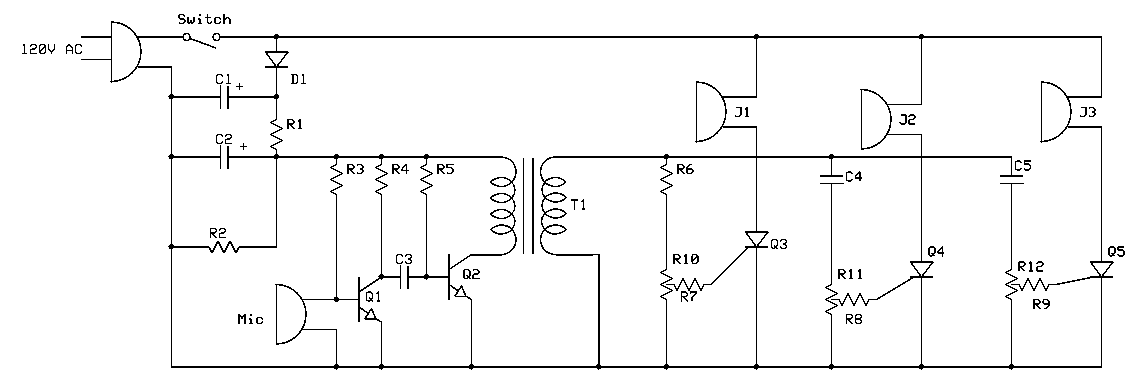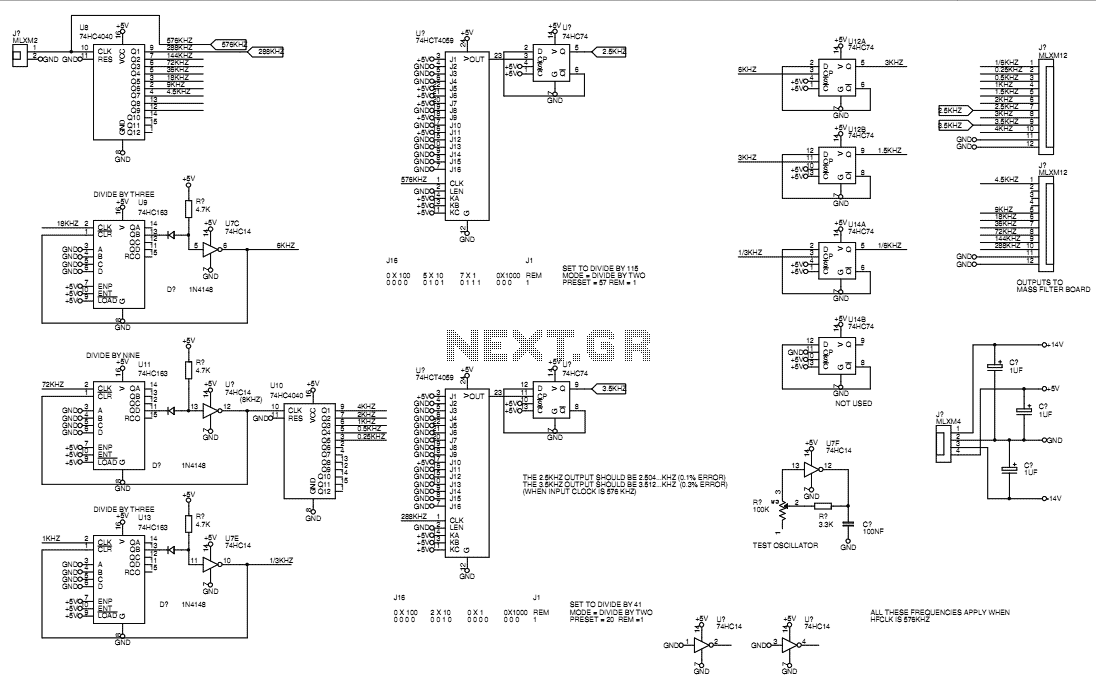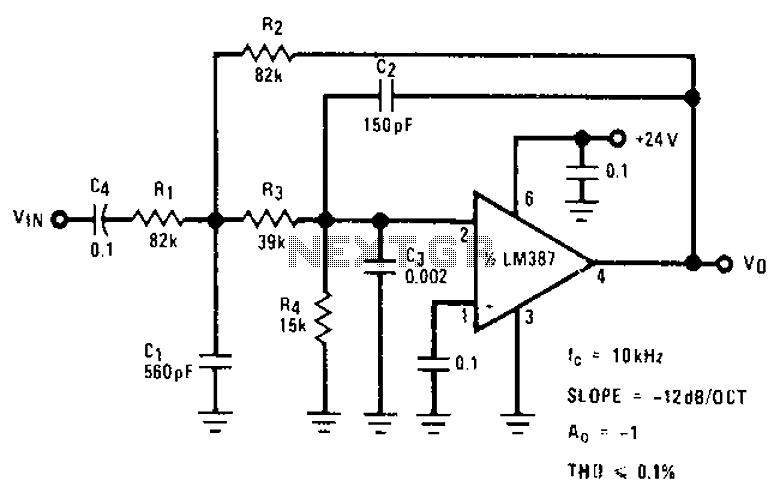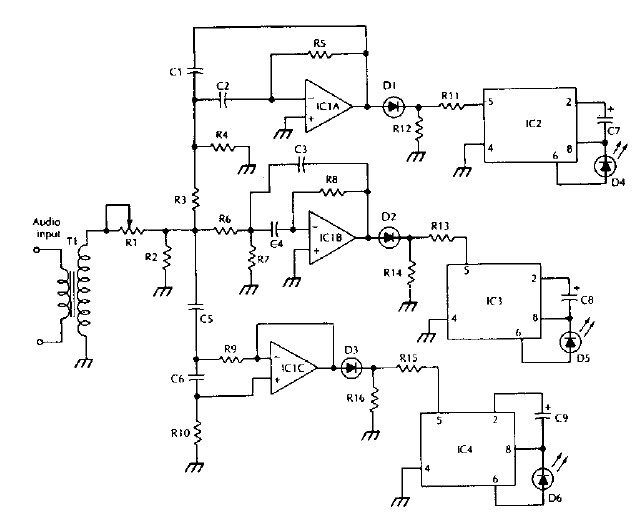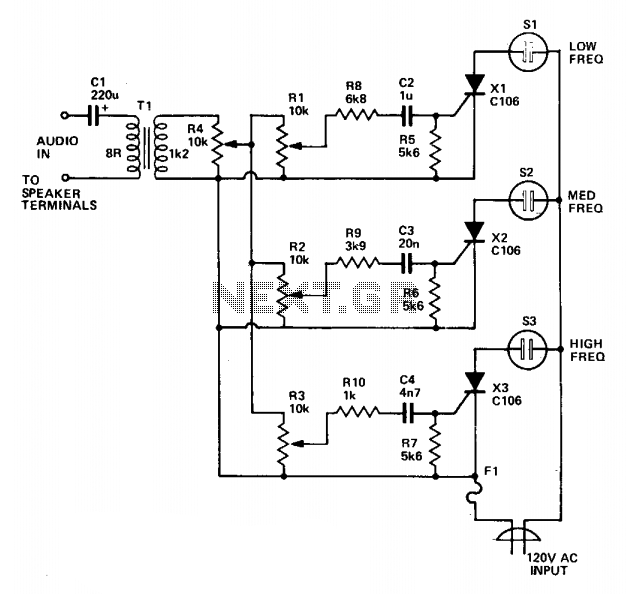
Stylus organ
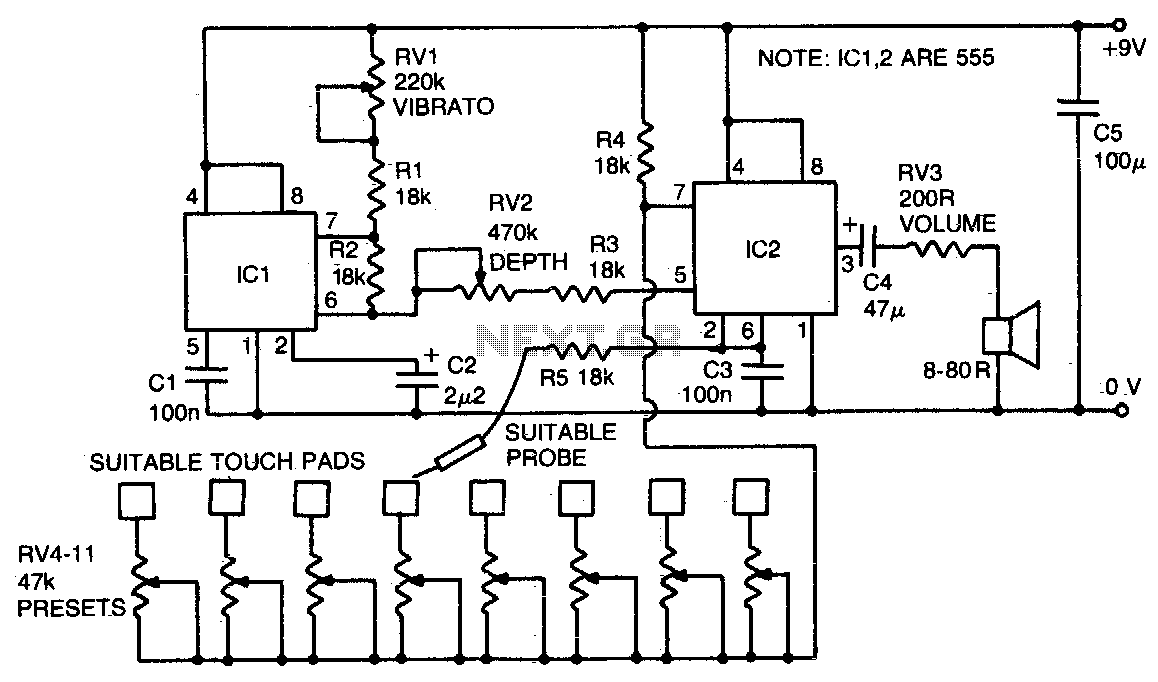
IC2 is an audio frequency oscillator. Its frequency is primarily controlled by the resistance between pins 2 and 7. RV4-11 controls the oscillator frequency, and by touching a stylus (connected via limiting resistor R5 to pin 2) to each preset, different notes can be played. IC1 is a low-frequency oscillator (approximately 3-10Hz), the frequency of which is variable by RV1. The output of this oscillator is connected through depth control RV2 and limiting resistor R3 to the voltage control input of the audio frequency oscillator, thus creating a vibrato effect.
IC2 functions as an audio frequency oscillator, with its operational frequency determined by the variable resistance between pins 2 and 7. The use of RV4-11 allows for precise tuning of the oscillator's frequency, enabling the generation of different musical notes when a stylus is applied to the presets. The stylus, connected through a limiting resistor (R5), ensures that the input voltage remains within safe levels while allowing for user interaction.
IC1 serves as a low-frequency oscillator, operating within a range of approximately 3 to 10 Hz. The frequency of IC1 can be adjusted using RV1, providing flexibility in modulation. The output from IC1 is routed through a depth control (RV2) and a limiting resistor (R3) before reaching the voltage control input of IC2. This configuration introduces a vibrato effect, enhancing the audio output by modulating the pitch at a low frequency.
The circuit design effectively combines both oscillators to create a rich audio experience, facilitating dynamic sound synthesis through user interaction and modulation techniques. This versatility makes the circuit suitable for various applications, particularly in electronic musical instruments and sound design. Proper attention should be given to component ratings and connections to ensure stable operation and to avoid damage to the circuit elements.IC2 is an audio frequency oscillator. Its frequency is primarily controlled by the resistance between pins 2 and 7. RV4-11 eontrol the oscillator frequency and by touching a stylus (connected via limiting resistor R5 to pin 2) to each preset, different notes can be played. ICl is a low frequency oscillator (approximately 3-10Hz), the frequency of which is variable by RVl The output of this oscillator is connected through depth control RV2 and limiting resistor R3 to the voltage control input of the audio frequency oscillator. Thus a vibrato effect occurs. 🔗 External reference
IC2 functions as an audio frequency oscillator, with its operational frequency determined by the variable resistance between pins 2 and 7. The use of RV4-11 allows for precise tuning of the oscillator's frequency, enabling the generation of different musical notes when a stylus is applied to the presets. The stylus, connected through a limiting resistor (R5), ensures that the input voltage remains within safe levels while allowing for user interaction.
IC1 serves as a low-frequency oscillator, operating within a range of approximately 3 to 10 Hz. The frequency of IC1 can be adjusted using RV1, providing flexibility in modulation. The output from IC1 is routed through a depth control (RV2) and a limiting resistor (R3) before reaching the voltage control input of IC2. This configuration introduces a vibrato effect, enhancing the audio output by modulating the pitch at a low frequency.
The circuit design effectively combines both oscillators to create a rich audio experience, facilitating dynamic sound synthesis through user interaction and modulation techniques. This versatility makes the circuit suitable for various applications, particularly in electronic musical instruments and sound design. Proper attention should be given to component ratings and connections to ensure stable operation and to avoid damage to the circuit elements.IC2 is an audio frequency oscillator. Its frequency is primarily controlled by the resistance between pins 2 and 7. RV4-11 eontrol the oscillator frequency and by touching a stylus (connected via limiting resistor R5 to pin 2) to each preset, different notes can be played. ICl is a low frequency oscillator (approximately 3-10Hz), the frequency of which is variable by RVl The output of this oscillator is connected through depth control RV2 and limiting resistor R3 to the voltage control input of the audio frequency oscillator. Thus a vibrato effect occurs. 🔗 External reference
